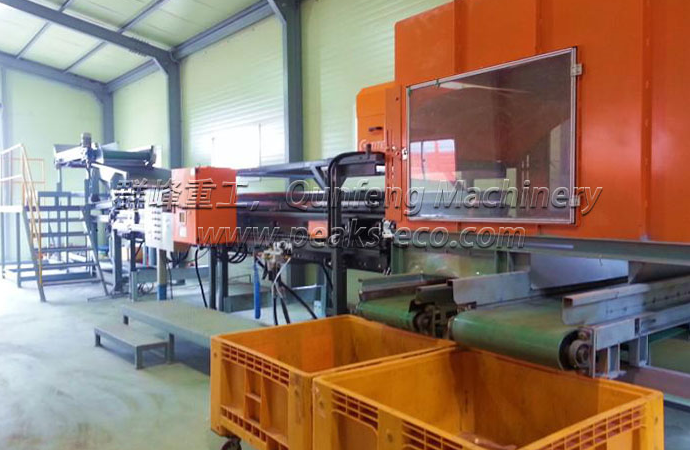Refuse transfer station is a refuse transfer station set up between the garbage producing area (or the centralized location) and the treatment and disposal facilities to reduce the transportation cost of household refuse collection and transportation. Here, the garbage collected from each collection point will be collected and transferred to a large or another low freight vehicle to continue to be transported to the disposal site. The transfer capacity of the transfer station can reach 3000 tons/day. The location and scale of the transfer station are important economic management issues in the garbage removal work. Sometimes garbage transfer stations are built together with garbage recycling sites. In this case, the transferred garbage has changed its original characteristics and quantity and becomes the residue after recycling.
Transfer stations can be divided into three types: large, medium, and small according to the daily garbage transfer volume. Small transfer stations have a daily transfer volume of fewer than 150 tons, medium transfer stations have 150 to 450 tons, and large transfer stations have more than 450 tons. The daily garbage transport volume can reach 2000-3000 tons.
The function of the Waste Transfer Station System china is to improve transportation efficiency and reduce transportation costs, and at the same time has a certain waste sorting function. The domestic garbage transfer station can improve transportation efficiency. Simply put, it is to load the garbage from the small car to the big car and take advantage of the large capacity of the big car, reduce the number of transportation vehicles, reduce the toll, and thus reduce the cost of garbage transportation. In addition, the modern transfer station is equipped with a garbage compressor, which can compress the volume of garbage to about half of the original volume, which can further utilize the carrying capacity of the cart.

Waste Transfer Station System
In addition to the sorting and transportation of different types of garbage by rationally arranging the loading and unloading process of transportation vehicles, the waste transfer station system can also arrange certain sites, equipment, and personnel to sort the garbage to a certain extent. The garbage transfer station can even be designed as a garbage sorting center with considerable processing capacity, adopting a complete set of sorting equipment and industrialized processes to greatly improve the sorting and recycling efficiency of domestic waste. Therefore, the garbage transfer station is an indispensable and important link in the modern urban garbage collection and transportation system.
Some of the garbage transported from the transfer station is transported to the sanitary landfill. The garbage is filled into the prepared pit, covered, and compacted to cause biological, physical, and chemical changes to decompose organic matter to achieve The purpose of reduction and harmlessness. Special pipelines and anti-seepage layers are laid in these pits to collect gas and leachate produced by waste fermentation. After the gas is burned, part of the leachate is purified and processed into reclaimed water, which is used to clean garbage vehicles and ground dust, and part of the leachate is filtered and discharged after reaching the national first-level standard, which will not cause pollution to the environment. Others are transported to the composting plant. After composting, the domestic waste becomes hygienic and odorless humus, which is used as fertilizer for plants. Some are sent to the incinerator for incineration so that the combustible components in the garbage are fully oxidized, and the heat generated is used for power generation and heating.

没有评论:
发表评论